What exactly defines “dance songs”? It’s a fair question. In a broad sense, any piece of music that inspires movement could be considered a dance song. From The Beatles to Slayer, many artists across genres have created tracks that get people moving. Hip-hop and reggae are almost universally considered Great Dance Music. However, when we talk about a curated list of the greatest dance songs, like a hypothetical “Top 200 Greatest Dance Songs of All Time,” we’re focusing on something more specific: “dance music culture.” This is a vast and distinct world, spanning nearly fifty years and constantly evolving, remaining vibrant and relevant today and into the future.
Our exploration of dance music, after acknowledging the foundational influence of James Brown, the “Godfather of Soul” and a key figure in groove-based music, begins in the mid-1970s with the rise of disco. From there, we trace its evolution through the early 1980s club scenes with sounds like electro and Latin freestyle. Dance music experienced a powerful resurgence when disco was reimagined as house music in Chicago and techno in Detroit. This rebirth then explosively transformed into the rave culture of the 1990s, spawning diverse subgenres from jungle and trance to gabba and garage, and ultimately leading to the EDM and dubstep phenomena of the 2000s. While these genres have had their moments of mainstream prominence, they never truly disappear. Drum ‘n’ bass, for example, is experiencing a resurgence, and contemporary house tracks continue to emerge.
This exploration doesn’t aim to encompass every nuance within this vast ocean of subgenres. Instead, we focus on tracks that feel transcendent, universally resonant, and canonical within the broader context of great dance music. We are particularly interested in moments where dance music intersects with wider musical landscapes – synth-pop, hip-hop, funk, Miami bass, R&B, indie-rock, Latin music, and pop. This is why you might find artists like Prince, Robyn, Britney Spears, Shakira, and Justin Bieber alongside pioneers like Adonis, Frankie Knuckles, Moodymann, Goldie, and innovators like SOPHIE.
If you’ve ever wondered how we arrived at a point where mainstream artists like Drake and Beyoncé are releasing house-inspired records, this journey through great dance music history offers some answers, at least according to our perspective.
Donna Summer, ‘Last Dance’ (1979)
 Donna Summer performing Last Dance, iconic disco song.
Donna Summer performing Last Dance, iconic disco song.
While the film Thank God It’s Friday might be seen as a promotional vehicle for Casablanca Records, Donna Summer’s label, and perhaps a sign of disco’s impending commercial saturation, “Last Dance” stands as a genuinely deserving Oscar winner for Best Original Song. This track masterfully builds from a slow, almost ballad-like opening, gradually transforming into a vibrant and exhilarating disco anthem. The genius behind this tempo shift is Casablanca’s producer Bob Esty, who conceived the song’s dynamic structure. “Last Dance” is a quintessential example of great dance music from the disco era. —M.M.
Fatboy Slim, ‘The Rockafeller Skank’ (1998)
 Donna Summer performing Last Dance, iconic disco song.
Donna Summer performing Last Dance, iconic disco song.
“It’s funny,” Norman Cook, known as Fatboy Slim, remarked about his massive hit, “The Rockafeller Skank.” “The first time it ever got played was at the Boutique in Brighton. I put it on and everybody just looked up, mouthing, ‘This is you, isn’t it?’” Indeed, Cook’s signature formula of breakbeats combined with catchy guitar riffs reached peak effectiveness with “Skank.” Featuring a surf-rock guitar riff and a memorable Lord Finesse vocal sample (“Right about now, the funk soul brother/Check it out now, the funk soul brother”), the track quickly became ubiquitous. “There were lots of jokes about ‘Frat-Boy Slim,’” Cook recalled. “I suppose ‘Rockafeller Skank’ became an anthem for that sort of beer-boyish mentality.” Despite the playful label, “The Rockafeller Skank” is undeniably great dance music that resonated across diverse audiences. —M.M.
Mescalinum United, ‘We Have Arrived’ (1991)
Techno’s hard and intense counterpart is “gabber,” a Dutch word for “buddy,” and the Netherlands is indeed the music’s stronghold. However, the pioneering figure of gabber is Marc Acardipane, known under approximately 90 different aliases. His initial and still powerful statement, “We Have Arrived,” released under the name Mescalinum United, is constructed from pounding drums and piercing air-raid siren sounds. This track served as the foundational blueprint for the entire gabber genre. At Brooklyn raves, where DJ Lenny Dee championed the sound and released the track in America, crowds would enthusiastically mosh to its relentless energy. “We Have Arrived” remains a seminal example of early, raw, and great dance music within the techno landscape. —M.M.
Oliver Heldens, ‘Melody’ (2016)
 Oliver Heldens, Dutch DJ and producer of melodic great dance music.
Oliver Heldens, Dutch DJ and producer of melodic great dance music.
By the mid-2010s, a sense of fatigue had set in even among main-stage festival DJs regarding the predictable “build-and-drop” formula that had become dominant in dance music. Oliver Heldens’ “Melody” signaled a significant shift. Released when the Dutch producer was only 18, “Melody” possessed a sophisticated, almost classical dance music sensibility, characterized by dramatic string swells and an uplifting piano melody. While retaining a powerful bassline, the track offered a more refined and airy approach. “Melody” marked a turning point towards a more nuanced and melodic style within great dance music. —M.M.
Kerri Chandler, ‘Rain’ (1998)
New Jersey house producer Kerri Chandler’s deeply soulful and uplifting tracks are a key reason for his enduring influence on younger producers and DJs. “I never considered myself a singer,” he stated in 2014. “I feel I’m more of a vocalist. I write my life’s story and let it out through the music.” Perhaps “monologist” is a more fitting description. In “Rain,” Chandler’s vocal delivery, punctuated by the repeated word “rain,” expresses vulnerability and longing (“Never knew you could be this way — rain”). Yet, the music itself, particularly the playful xylophone solo, is more teasing than melancholic. “Rain” showcases the emotional depth and musicality that define Chandler’s contributions to great dance music. —M.M.
Detroit Grand Pubahs, ‘Sandwiches’ (2000)
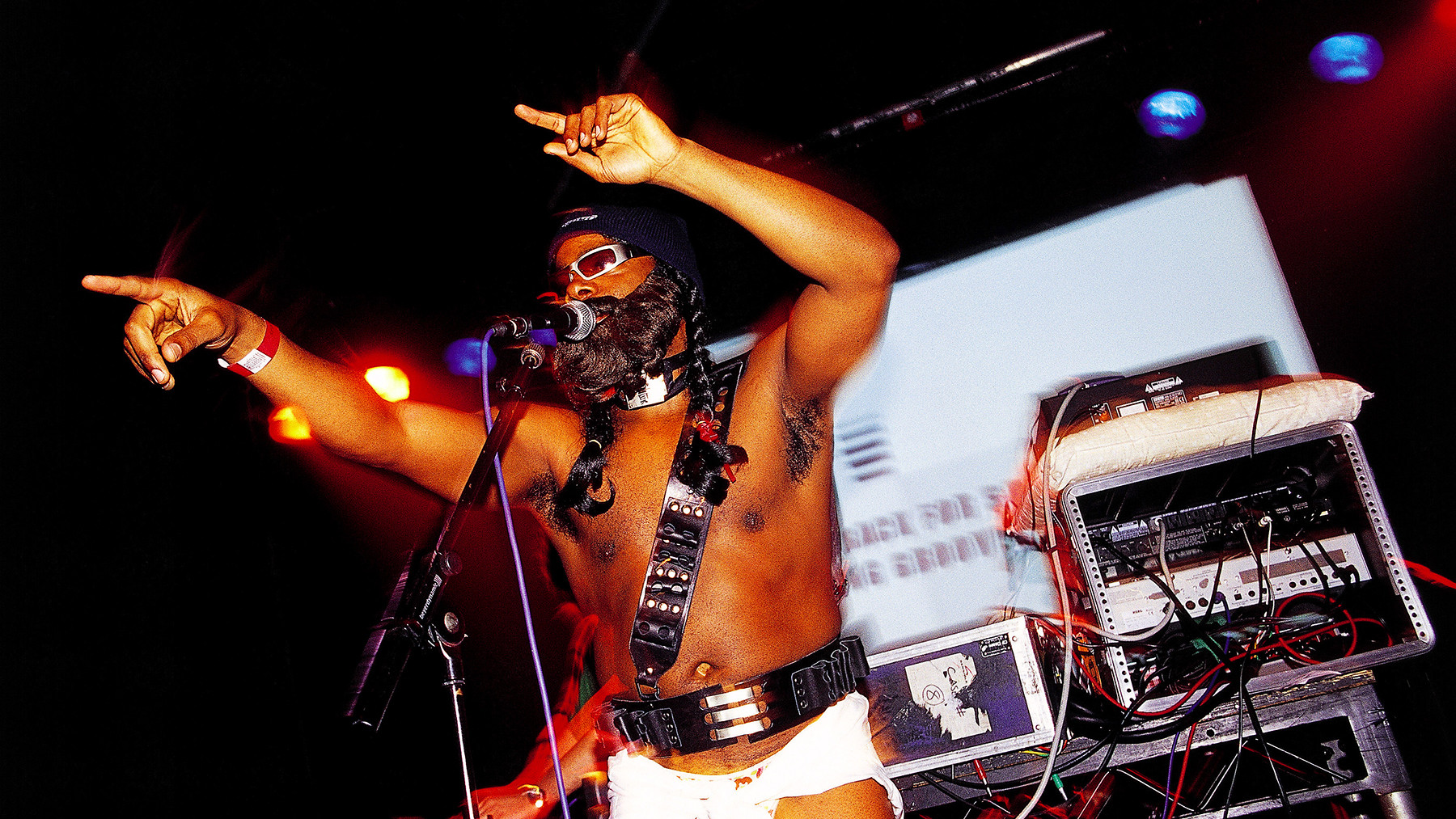 Paris the Black Fu of Detroit Grand Pubahs performing live electronic dance music in London.
Paris the Black Fu of Detroit Grand Pubahs performing live electronic dance music in London.
Andy Toth and Mack Goudy — known as Dr. Toefinger and Paris the Black Fu of Detroit Grand Pubahs — first connected while working at a restaurant in Royal Oak, Michigan. “We both liked whiskey and working on music,” Toth explained. One evening, Toth created a dynamic and quirky electro track. Paris, upon hearing it, instructed him to turn on the microphone. “I said ‘What you got?’ He said, ‘Don’t worry about it. Just turn the mic on.’” Within minutes, Paris spontaneously improvised suggestive lyrics about a dance-floor encounter. This impromptu recording became “Sandwiches,” a defining moment in Detroit’s electro revival at the turn of the century and an instant international club hit. “Sandwiches” exemplifies the raw energy and playful experimentation within great dance music emerging from Detroit. —M.M.
Black Box, ‘Everybody Everybody’ (1990)
Sometimes, iconic records emerge from ethically questionable circumstances. “Everybody Everybody” is one such example. Martha Wash of the Weather Girls was contracted in 1989 to record demos for an Italian house production team calling themselves Groove Groove Melody. She was led to believe these recordings were for presentation to other vocalists. However, the tracks were released under the name Black Box, featuring Wash’s uncredited vocals. Adding insult to injury, a model was hired to lip-sync Wash’s vocals in music videos. Wash pursued legal action and won. (She also took similar action against C+C Music Factory for a comparable situation). Daniele Davoli of Black Box later expressed regret, stating in 2013, “We didn’t know any better at the time. I guess we had to learn from our mistakes.” Despite its controversial origins, “Everybody Everybody” became a defining anthem of early 90s house and remains recognized as great dance music. —M.M.
Big Freedia, ‘Azz Everywhere’ (2010)
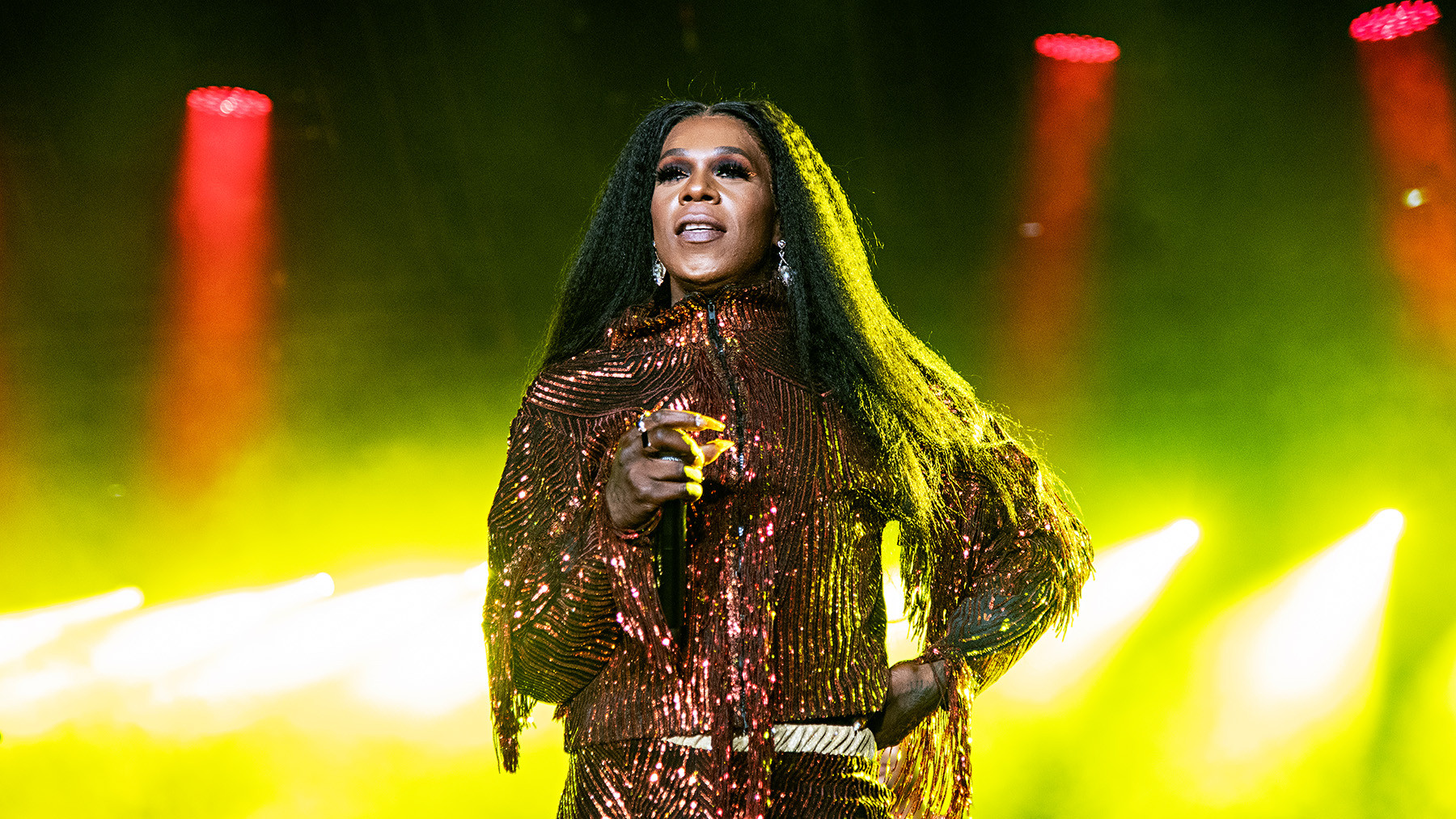 Big Freedia performing bounce music, a high-energy form of great dance music, at Essence Festival.
Big Freedia performing bounce music, a high-energy form of great dance music, at Essence Festival.
“I’ve run across half the globe now, spreading the goodness of bounce and trying to get people everywhere onto what’s been around for two decades,” Big Freedia stated in 2011, advocating for New Orleans’ distinctive, high-tempo, and boisterous club sound – the very music for which twerking was popularized. “Azz Everywhere” became the track that propelled bounce music into wider recognition. It’s a sonic explosion of snares, samples, and the chanted title phrase. “We hold classes on the road sometimes at performing venues and different colleges to teach about the history of bounce music,” Big Freedia added. “We describe it as an uptempo, heavy bass, holler-response music. And it definitely has a lot to do with azz shaking!” “Azz Everywhere” is a prime example of high-energy, great dance music rooted in regional club culture. —M.M.
Joy Orbison, ‘Hyph Mngo’ (2009)
In the late 2000s, dubstep producers were pushing creative boundaries, leading to a wave of innovative tracks. Joy Orbison’s debut, “Hyph Mngo,” became the quintessential dubstep track of 2009, capturing the scene at its peak. The bassline and synthetic textures create a smooth, gliding feel, while the syncopated snare drum and fragmented vocal samples – a woman’s voice alternating between “Ooh!” and “I do” – add an unexpected emotional depth, rare for dubstep at the time. This emotional resonance contributed to “Hyph Mngo” crossing over into the mainstream and solidifying its place as great dance music within the dubstep genre. —M.M.
ESG, ‘Moody’ (1981)
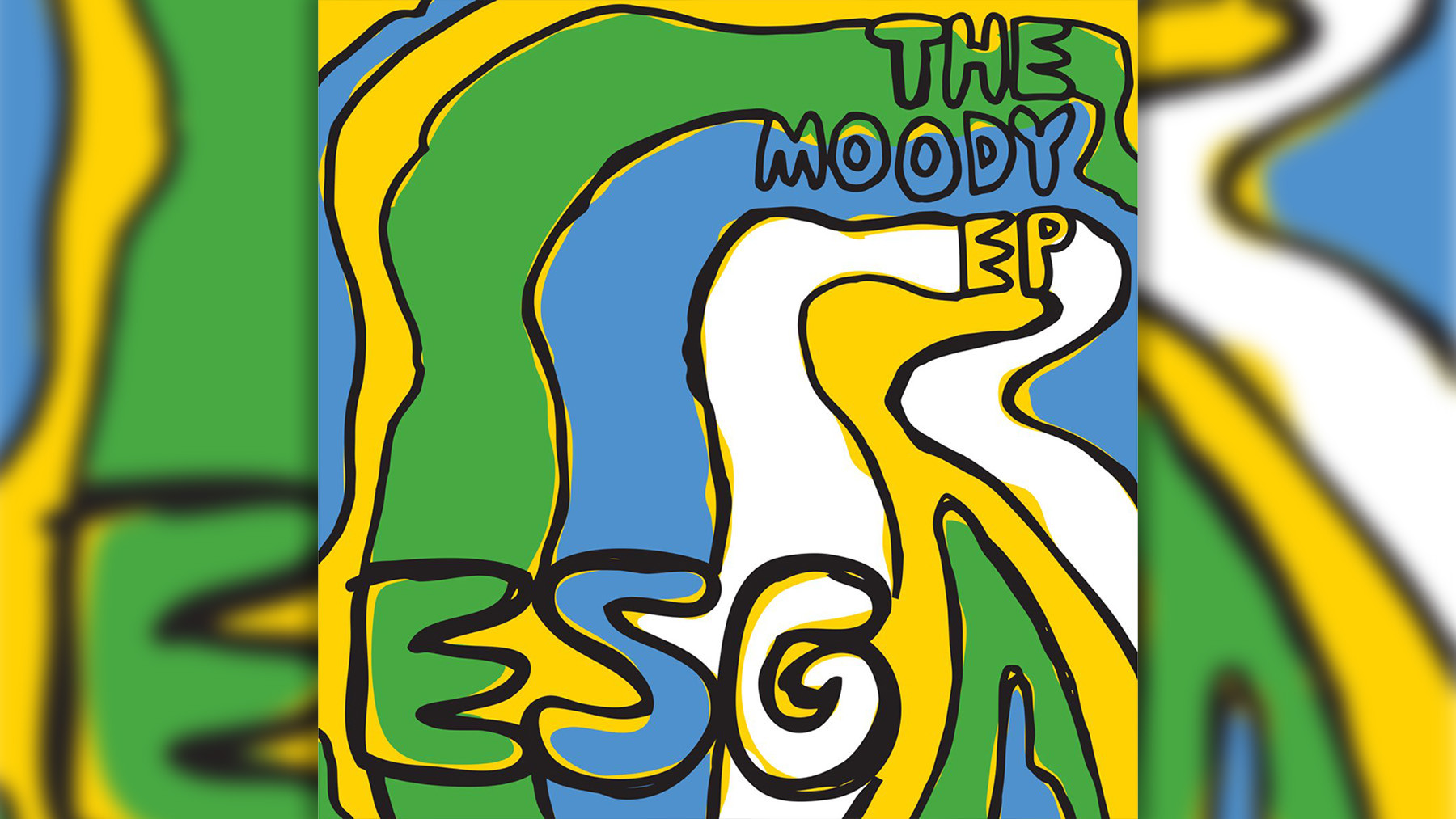 ESG performing Moody, influential post-punk dance music from South Bronx.
ESG performing Moody, influential post-punk dance music from South Bronx.
The Scroggins sisters from the South Bronx left a lasting impact on New York dance music with their band ESG, formed in the late 1970s. While their grooves drew inspiration from funk and disco, their minimalist sound and emphasis on percussion resonated with post-punk and no-wave club scenes. This crossover appeal was amplified after they collaborated with Joy Division producer Martin Hannett for their debut EP. “Moody,” the EP’s centerpiece, remains strikingly modern. It’s characterized by a seductive bassline, bongo rhythms, and Renee Scroggins’ detached vocals echoing through the mix. “Moody” is a timeless example of innovative and great dance music that transcended genre boundaries. —C.S.
La Roux, ‘In for the Kill (Skream’s Let’s Get Ravey Remix)’ (2009)
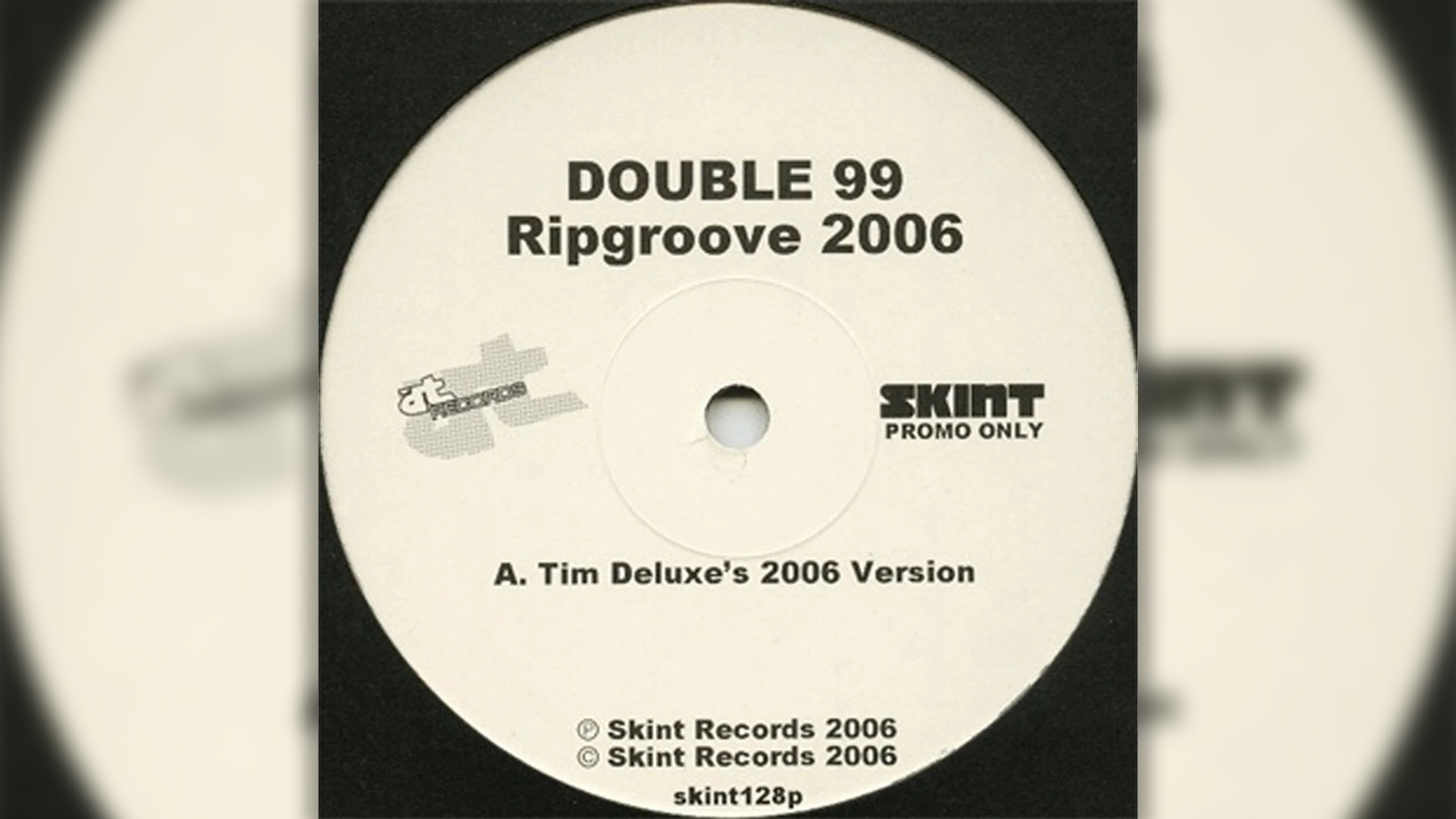 La Roux, artist whose song was remixed into great dance music by Skream.
La Roux, artist whose song was remixed into great dance music by Skream.
Artists sometimes have mixed feelings about remixes of their work. However, La Roux’s Elly Jackson praised Skream’s remix of her synth-pop single “In for the Kill,” claiming it not only captured the essence but also “regave birth to the real meaning and atmosphere of the song as we wrote it.” Skream’s remix reimagines the original, discarding the upbeat tempo and Kanye West’s rap verse, and instead builds intense tension with flattened synths before unleashing a barrage of drum-and-bass breaks. “What he did with the song is what we would have done if we’d been brave enough,” Jackson admitted. “We wanted to make a pop record and that just isn’t a pop thing, what he did to it.” Skream’s “Let’s Get Ravey Remix” transformed “In for the Kill” into a powerful piece of great dance music that surpassed its pop origins. —M.M.
Double 99, ‘RIP Groove’ (1997)
 La Roux, artist whose song was remixed into great dance music by Skream.
La Roux, artist whose song was remixed into great dance music by Skream.
London producers Tim Deluxe and DJ Omar, initially working as RIP in the mid-90s, rebranded as Double 99 to commemorate a “double-pack vinyl EP,” as Omar explained. Due to time constraints, “we decided to make up track names and get the artwork done before the tracks had actually been made.” “RIP Groove,” named in homage to their previous moniker, cleverly samples Armand Van Helden’s remix of CJ Bolland’s “Sugar Is Sweeter,” alongside elements of Kenny Dope and singer Tina Moore. Created in just three hours, “RIP Groove” became a massive hit in 1997, propelling UK garage (then called “speed garage”) into the mainstream charts and introducing a fresh sound. “RIP Groove” is a defining track of UK garage and a significant example of great dance music innovation. —M.M.
Snap!, ‘The Power’ (1990)
Snap!’s “The Power” embodies a quintessential dance-music archetype. Two German producers sampled an American rapper (Chill Rob G from Flavor Unit) and an American R&B vocalist (Jocelyn Brown) to create a club hit. It was then picked up by a major label (Arista) and re-recorded with a new vocalist (Turbo B, an American G.I. stationed in Germany). Subsequently, the originally sampled rapper re-recorded that version under the name Power Jam feat. Chill Rob G. Both versions became club hits, but “The Power” transcended club culture and became a Europop blueprint. Snap!’s Michael Muenzing observed in 1994, “Now you have 50 or 60 groups singing this way — rapping, singing the chorus, and going back to the rap.” “The Power” demonstrated a formula for great dance music that influenced a generation of Europop acts. —M.M.
DJ Frosty feat. Fatman Scoop, DJ Webstar, Young B. & Smooth, ‘Ride That Wave (Remix)’ (2010)
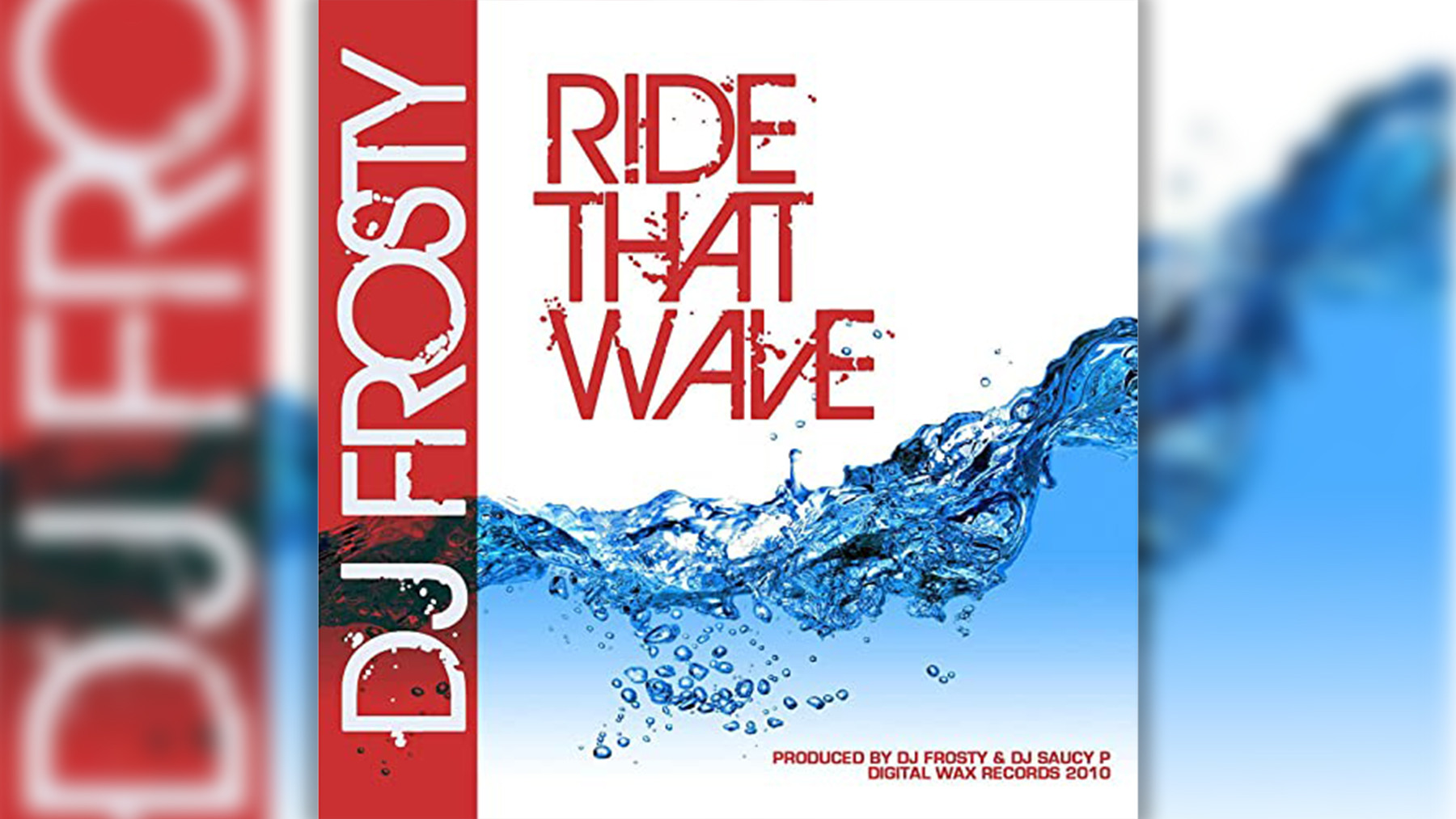 DJ Frosty, Jersey club music artist known for great dance music tracks like Ride That Wave.
DJ Frosty, Jersey club music artist known for great dance music tracks like Ride That Wave.
Originating in Newark, New Jersey (initially called Brick City club), Jersey club is characterized by its sharp, syncopated rhythms, clipped vocal samples, and an energetic yet non-aggressive feel, reminiscent of hip-house but with its own distinct flavor. DJ Frosty’s “Ride That Wave” perfectly exemplifies these qualities. It’s an incredibly catchy, chant-driven track that emerged just as Jersey club began gaining international attention from EDM producers. This exposure eventually led to Jersey club’s influence reaching mainstream artists like Drake on his album Honestly, Nevermind. The remix features artists like Fatman Scoop, whose 90s hip-hop cut-ups on AV8 Records were favorites of DJs like Fatboy Slim. “Ride That Wave (Remix)” is a standout example of contemporary great dance music rooted in regional club sounds. —J.D.
Todd Terje, “Inspector Norse” (2012)
When Norwegian nu-disco producer Todd Terje created “Inspector Norse” – entirely using sounds from a vintage ARP synthesizer, like the rest of his 2012 It’s the Arps EP – he didn’t anticipate its widespread appeal. “I thought it was going to go well with the DJs, as I’d tried it out and it had a danceable beat, but I never thought I’d hear people singing along to the melodies,” Terje admitted. However, the track’s infectious melody proved irresistible. “It really helped me as a DJ in terms of popularity,” he noted. “Inspector Norse” became an unexpected hit, demonstrating the power of melodic hooks within great dance music. —M.M.
The Rapture, ‘House of Jealous Lovers’ (2002)
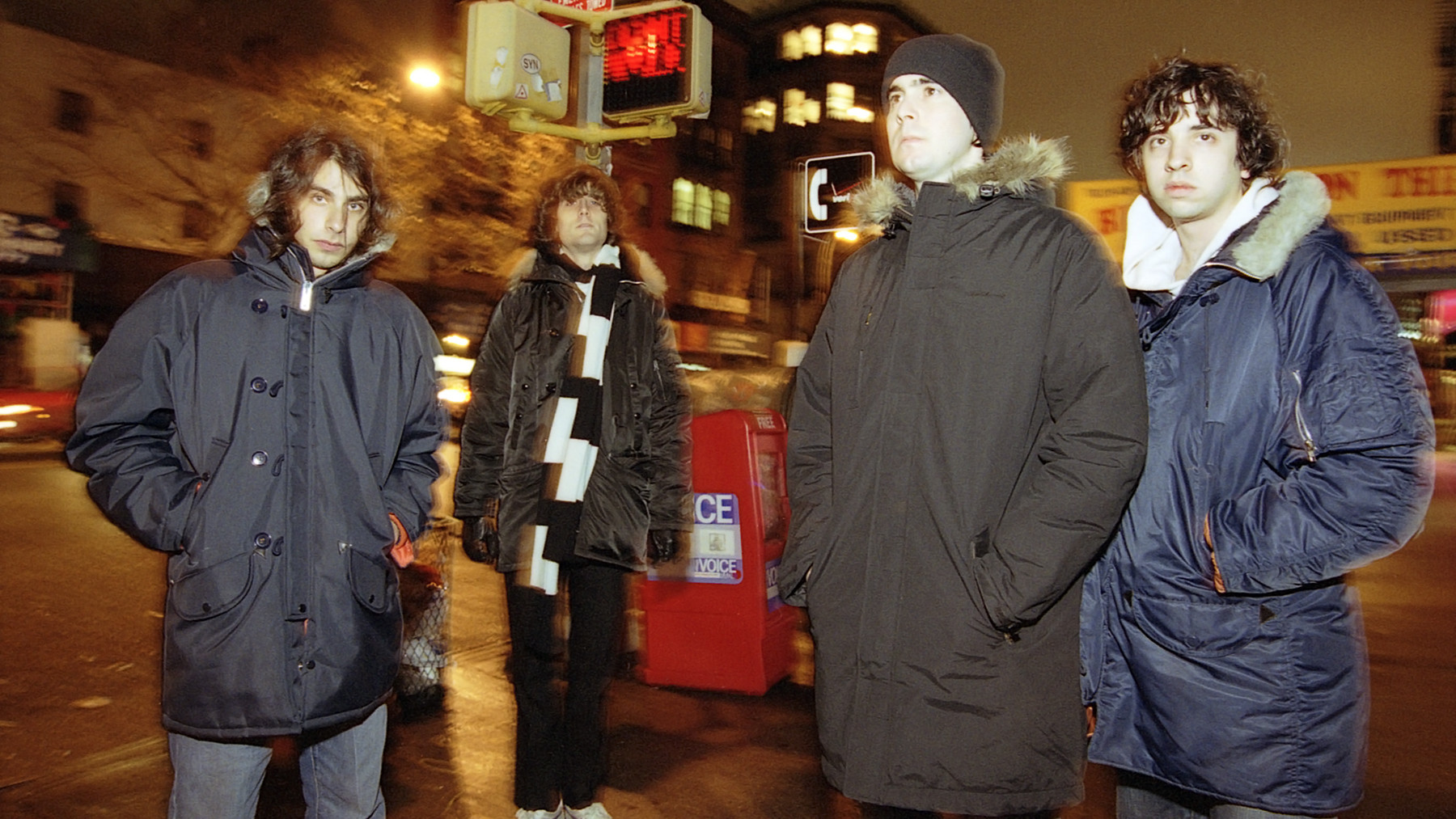 The Rapture performing House of Jealous Lovers, influential dance-punk great dance music.
The Rapture performing House of Jealous Lovers, influential dance-punk great dance music.
“Most people now have no memory of how absolutely sacrilegious it was at the time,” DFA co-founder James Murphy reflected on The Rapture’s “House of Jealous Lovers.” “We wanted to make a rock track that could compete with dance music. We obsessed over it.” The Rapture’s debut single fused aggressive Gang of Four-esque guitar riffs and a captivatingly frantic vocal performance with a powerful beat and deep bass, specifically engineered for dance floor impact. It succeeded. The song became the defining track of the early 2000s “dance-punk” movement, inspiring countless New York bands to embrace a sound reminiscent of 1979 Manchester or Leeds and transforming indie bars into dance music venues. “House of Jealous Lovers” was a groundbreaking track that bridged rock and dance, solidifying its place as great dance music. —J.D.
TNGHT, ‘Higher Ground’ (2012)
“The first time around was our take on big American rap beats, with a little bit of cheekiness to it,” Hudson Mohawke explained regarding the 2012 EP he created with Lunice as TNGHT. This five-track EP propelled both artists to the forefront of EDM with its energetic, club-focused take on trap music. “Higher Ground,” a track characterized by its grand, almost regal stomp, is both spacious and intricate. Within a year, Kanye West enlisted TNGHT to produce “Blood on the Leaves” from his Yeezus album. TNGHT’s sound, exemplified by “Higher Ground,” redefined trap and contributed significantly to the landscape of great dance music. —M.M.
Roni Size and Reprazent, ‘Brown Paper Bag’ (1997)
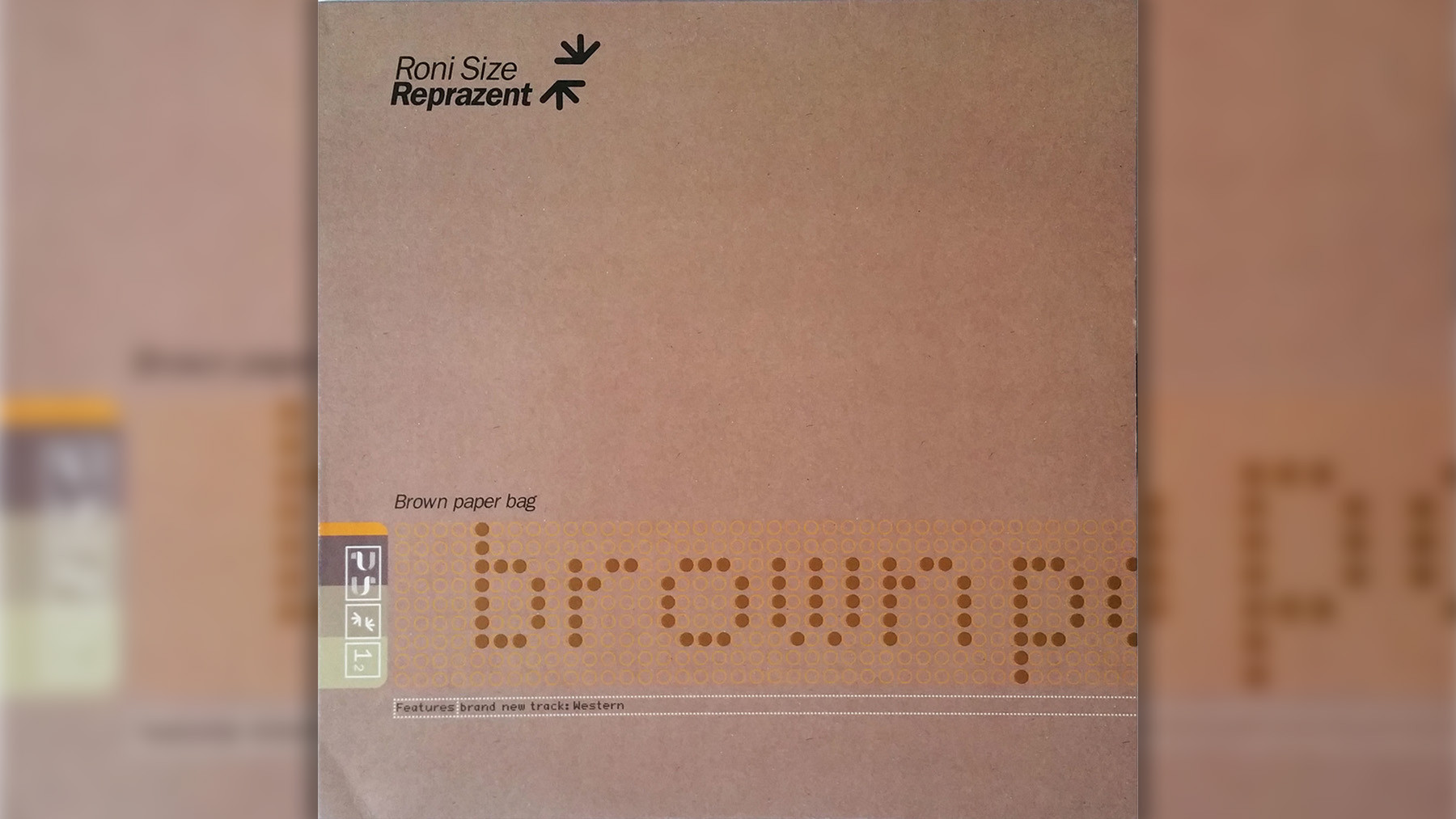 Roni Size Reprazent performing Brown Paper Bag, innovative drum and bass great dance music.
Roni Size Reprazent performing Brown Paper Bag, innovative drum and bass great dance music.
In the late 1990s, drum and bass was becoming increasingly fragmented and distanced from its dancehall and hip-hop roots. Bristol-based crew Roni Size and Reprazent successfully created drum and bass that felt both experimental and expansive while staying connected to its Black music origins. They achieved this by blending fast-paced beats with warm, organic jazz-funk influences. “It’s funny how ‘Brown Paper Bag’ split people,” Size recalled in 2018, referring to their most famous track, the double-bass driven highlight from their 1997 album New Forms. “They heard the jazz, how it sounded different from everything else, and they saw this other audience that loved it.” “Brown Paper Bag” was a pivotal track that broadened the appeal of drum and bass and remains a benchmark of great dance music within the genre. —J.D.
Soul II Soul, ‘Back to Life (However Do You Want Me)’ (1989)
Led by DJ-producer Jazzie B and, for their first two albums, co-producer Nellee Hooper, Soul II Soul began as a London sound system specializing in reggae and soul. When they started recording in the late 1980s, their smooth grooves seamlessly merged these influences. Initially, their tracks were intended solely for Soul II Soul’s own parties. “It was literally for our sound [system] at the beginning,” Jazzie B explained. “We weren’t really interested in what anybody else was doing.” However, everyone soon became interested in them. “Back to Life” reached Number One on the Billboard R&B chart and Top Five on the Hot 100. Soul II Soul’s “Back to Life” brought sophisticated soul and reggae influences into the mainstream, cementing its status as great dance music. —M.M.
Felix da Housecat, ‘Silver Screen Shower Scene’ (2001)
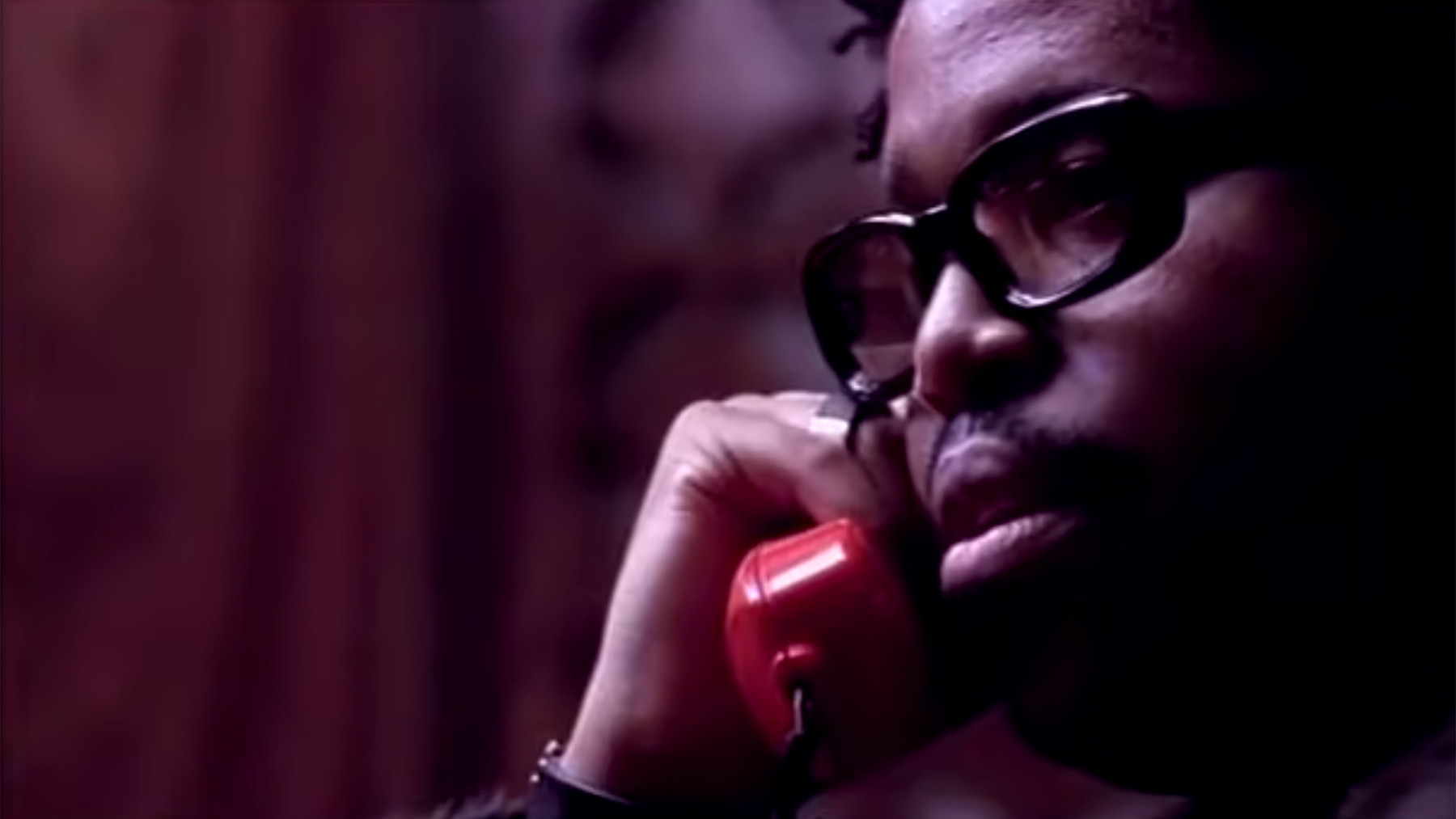 Felix da Housecat, Chicago house music innovator and creator of great dance music tracks.
Felix da Housecat, Chicago house music innovator and creator of great dance music tracks.
Felix Stallings Jr., known as Felix da Housecat, is a Chicago house music veteran. He co-created the acid house classic “Fantasy Girl” in 1987 while still in high school. His career went global with the 2000 album Kittenz and Thee Glitz, a collaborative project exploring themes of celebrity and artifice. “Silver Screen Shower Scene” became an instant anthem, its lyrics satirizing celebrity culture and its music seeming to prefigure the electroclash movement. Jacques Lu Cont’s “Thin White Duke Remix” further amplified its popularity with DJs. “Silver Screen Shower Scene” is a sharp and witty example of great dance music with cultural commentary. –M.M.
Dntel feat. Ben Gibbard, “(This Is) The Dream of Evan and Chan (Superpitcher Kompakt Remix)” (2001)
In 2000, Death Cab for Cutie’s Ben Gibbard had “a weird dream… involving [Lemonheads frontman] Evan Dando and Chan Marshall,” also known as Cat Power. “It was completely G-rated, not one of those inappropriate dreams, but it was bizarre – you know, in the same way you dream that you’re in your house but it’s not your house, your friend is there but he’s a merman.” He transformed this dream into a song, collaborating with Dntel (Jimmy Tamborello) before their Postal Service project. Dntel set Gibbard’s vocals to energetic beats and buzzing synths. However, the Superpitcher remix, from the influential German label Kompakt, elevated the track to a dreamlike state with hazy synth layers and echoing bell sounds, capturing the ethereal quality hinted at in the lyrics. The Superpitcher remix of “(This Is) The Dream of Evan and Chan” is an atmospheric and evocative piece of great dance music. —M.M.
Patrick Cowley feat. Sylvester, ‘Do Ya Wanna Funk?’ (1982)
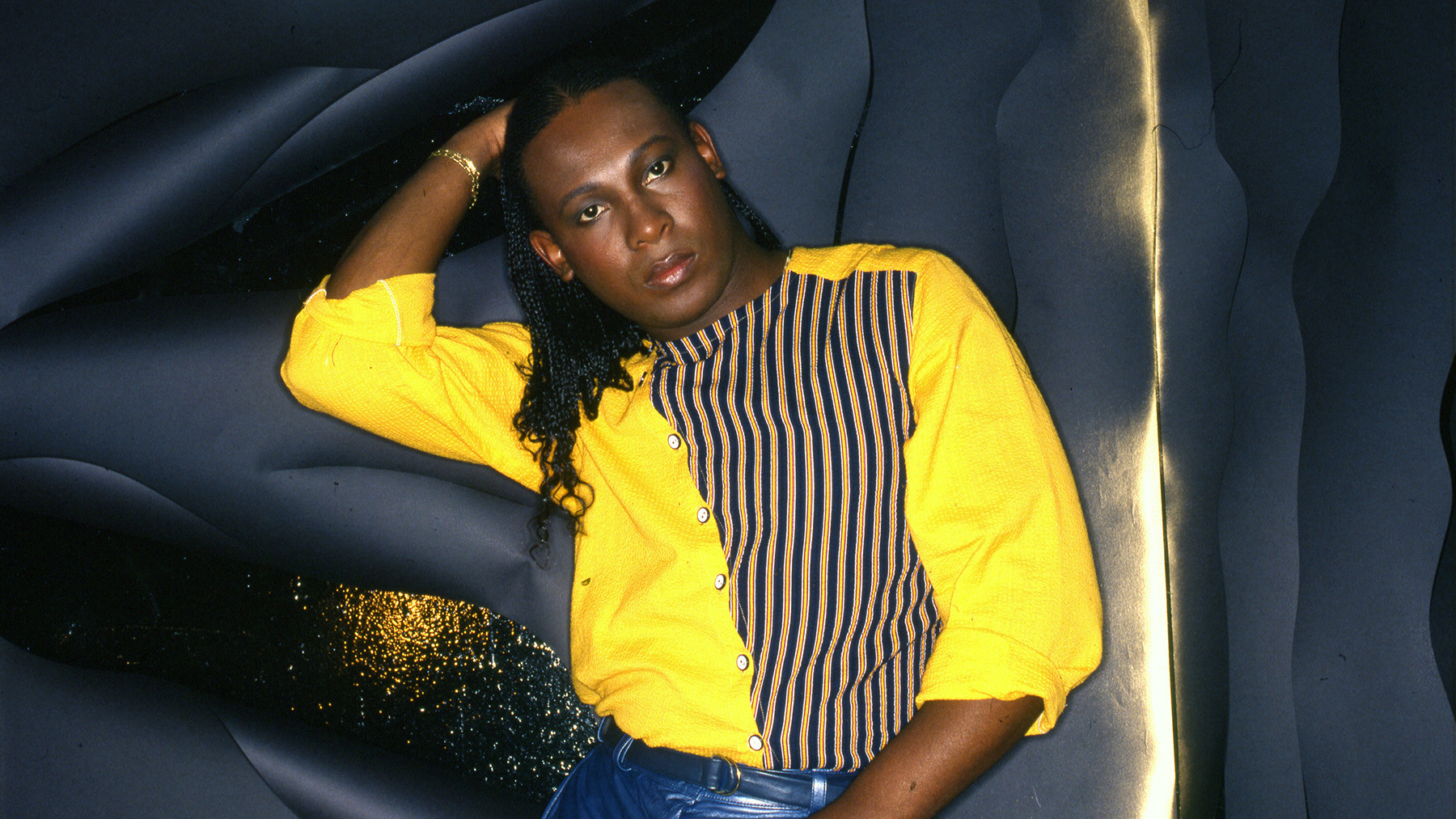 Sylvester, disco and Hi-NRG icon, collaborated with Patrick Cowley on great dance music.
Sylvester, disco and Hi-NRG icon, collaborated with Patrick Cowley on great dance music.
Patrick Cowley was a synth innovator who became a leading figure in Hi-NRG, a high-energy gay club music genre. His pioneering work included collaborations with Sylvester and his extended, groundbreaking remix of Donna Summer’s “I Feel Love.” Tragically, Cowley became ill in November 1981 and passed away a year later at 32, shortly after the term “AIDS” was officially recognized. During his final months, Cowley continued to create music, finishing tracks like “Do Ya Wanna Funk.” This track remains a landmark of Hi-NRG, featuring soaring synth riffs and Sylvester’s stratospheric falsetto. It also gained further recognition when featured in the party scene of the film Trading Places. “Do Ya Wanna Funk?” is a vibrant and influential example of great dance music within the Hi-NRG genre. —M.M.
Funkadelic, ‘One Nation Under a Groove’ (1978)
![]() Funkadelic, pioneers of funk and creators of great dance music anthem One Nation Under a Groove.
Funkadelic, pioneers of funk and creators of great dance music anthem One Nation Under a Groove.
“One Nation Under a Groove,” arguably the greatest funk track ever featuring a banjo, possesses an instantly captivating groove that propelled it to the top of the R&B singles chart for six weeks in 1978. George Clinton strategically assigned the song to the guitar-heavy Funkadelic (rather than the horn-driven Parliament) to give it more weight and impact. “Parliament is smashing,” he explained, “But Funkadelic is the movement.” “One Nation Under a Groove” is a defining anthem of funk and great dance music with enduring appeal. —M.M.
Evelyn Thomas, ‘High Energy’ (1984)
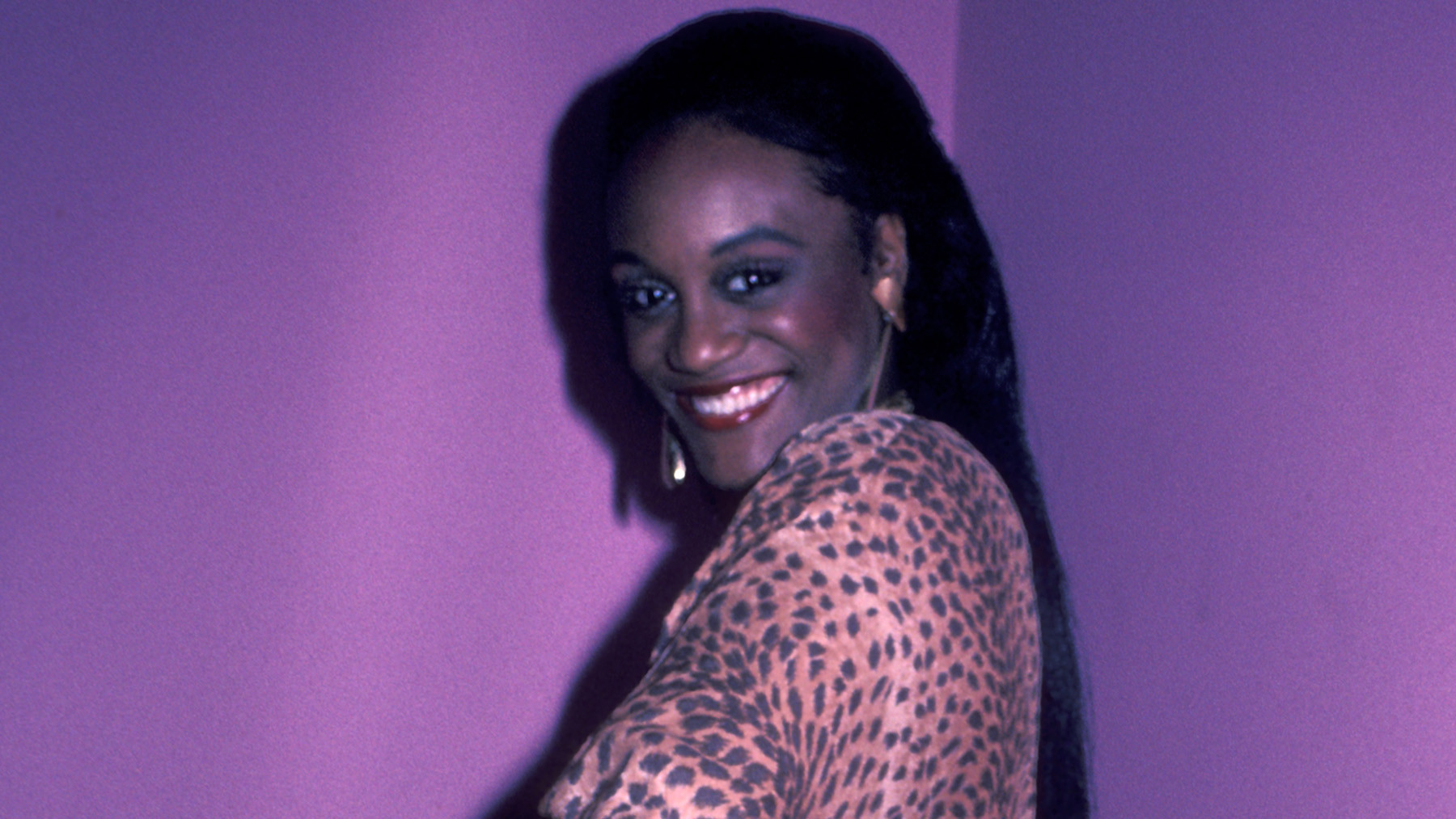 Evelyn Thomas, Hi-NRG singer whose track gave the genre its name and is great dance music.
Evelyn Thomas, Hi-NRG singer whose track gave the genre its name and is great dance music.
Released in April 1984, “High Energy” is credited with giving the Hi-NRG genre its name. However, it wasn’t the first of its kind, even for its creators. Chicago singer Evelyn Thomas was signed by Manchester producer Ian Levine to Pye Records in the mid-1970s as a teenager. Levine, a DJ on the Northern Soul circuit who transitioned to disco, especially as synths became prominent, blended “gay disco and old Motown — the two main Hi-NRG ingredients,” as Smash Hits reported. “High Energy,” brash, upbeat, and irresistibly catchy, reached the British Top Five and remains a dance floor classic, championed by DJs like The Blessed Madonna. “High Energy” is a quintessential example of great dance music that defined a genre. —M.M.
Daft Punk feat. Pharrell Williams and Nile Rodgers, ‘Get Lucky’ (2013)
When Pharrell Williams first met Daft Punk at a Madonna party, he expressed his desire to collaborate, saying, “If you just want me to play a tambourine, I’ll do it.” When they met in Paris, Williams mentioned his admiration for Nile Rodgers, and the robots played him a track they had already created with Rodgers. Williams recorded his smooth vocals during that visit. “You don’t need MDMA for this music, because it’s so incredibly vivid,” he enthused. “Get Lucky” is a modern disco masterpiece and an example of great dance music that transcends generations. –M.M.
Mat Zo and Porter Robinson, ‘Easy’ (2013)
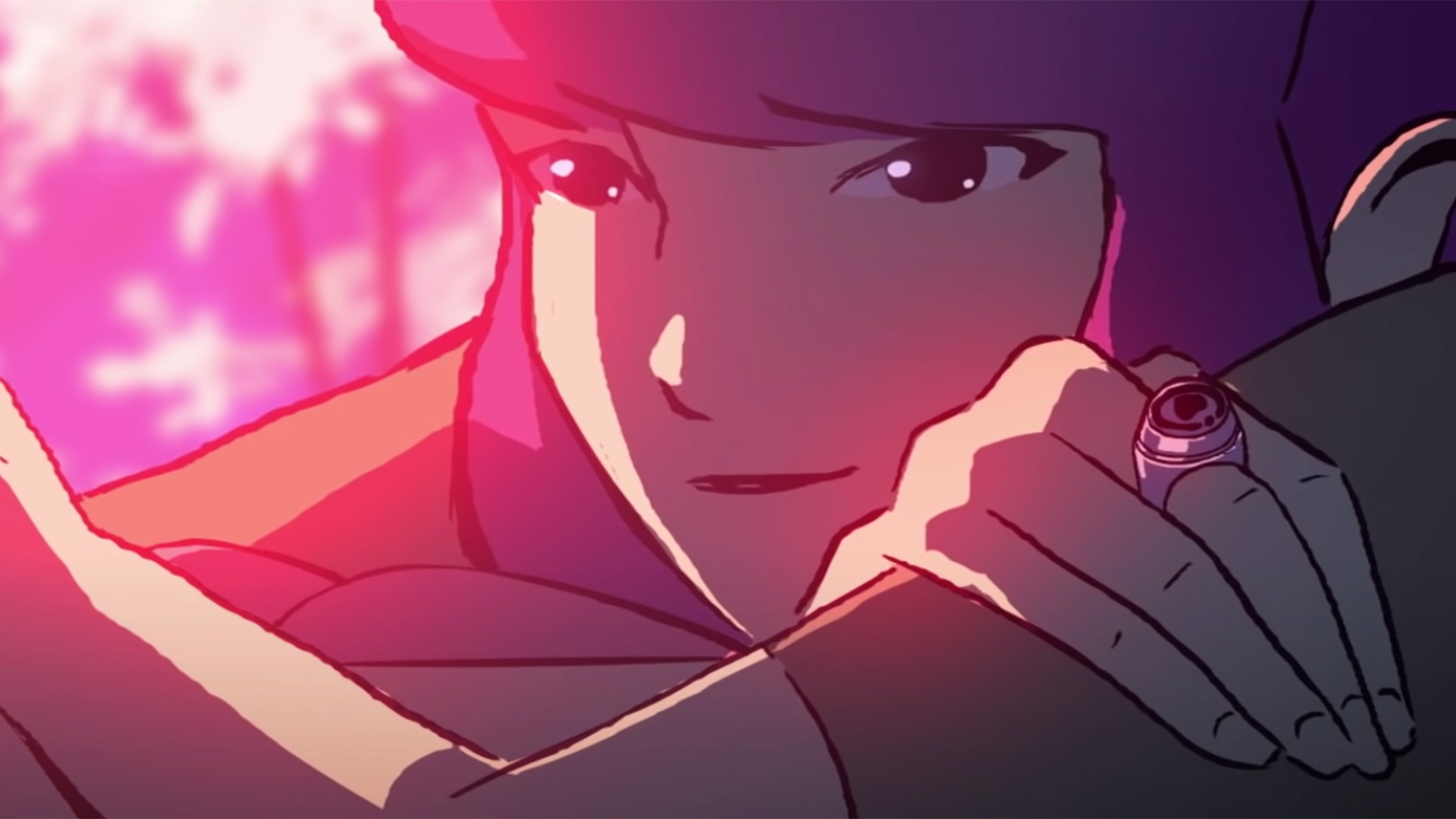 Porter Robinson and Mat Zo, creators of Easy, a Daft Punk inspired great dance music track.
Porter Robinson and Mat Zo, creators of Easy, a Daft Punk inspired great dance music track.
“‘Easy’ in my mind is an homage to Daft Punk’s Discovery,” Porter Robinson explained about his collaboration with Mat Zo. “It takes the disco chords of all of the early French stuff and gives it a louder, more trance-inspired feel.” “Easy” is a skillful update, both dazzling and classic in its approach. The central synth melody evokes both a Theremin and a Moog synthesizer, and the vocal sample (from Colourblind’s “Nothing Better”) carries an emotional intensity often missing in stadium EDM of that era. “Easy” is a contemporary take on great dance music that pays homage to its influences while forging its own path. —M.M.
Justice vs. Simian, “We Are Your Friends” (2006)
In 2003, Parisian musicians Gaspard Augé and Xavier de Rosnay entered a remix contest for British rock band Simian’s “Never Be Alone.” “You could download the separate tracks: guitar, drums, and other things,” de Rosnay told The New York Times. “But we were working without music software: just a sampler, a sequencer, and a synthesizer. So we downloaded just the voice on the chorus, because there was not space enough for more than eight seconds of sound on our sampler.” The result was a raw, energetic track that effectively bridged electroclash and EDM. Retitled “We Are Your Friends,” it became a hit in 2006, launching Justice’s career and inspiring Simian to reinvent themselves as the dance act Simian Mobile Disco. “We Are Your Friends” is a genre-bending track and a significant moment in great dance music history. —M.M.
Martin Garrix, ‘Animals’ (2013)
 Martin Garrix performing Animals, a global EDM great dance music hit.
Martin Garrix performing Animals, a global EDM great dance music hit.
Dance music often favors youth, and the early 2010s EDM boom exemplified this. Martin Garrix’s “Animals,” built around a catchy synth riff so memorable people chanted along even without lyrics, was released when the Dutch producer was only 18. It became an instant global phenomenon. This rapid success led to skepticism. “At first, people in the industry assumed I didn’t make my own shit,” Garrix later admitted. “So I would do livestreams and production tutorials on the internet to get rid of that stigma.” Despite initial doubts, “Animals” solidified Garrix’s career and became a defining track of the EDM boom, representing a form of great dance music that captivated massive audiences. —M.M.
Debbie Deb, ‘Lookout Weekend’ (1984)
“As far as I know, I coined the phrase. I hadn’t heard anybody call it freestyle music prior to me coming up with the name of the group Freestyle,” Miami production pioneer Pretty Tony stated in 2015. His airy, energetic productions bridged the gap between KC and the Sunshine Band and 2 Live Crew. “Lookout Weekend,” his second single with Debbie Weshoff Lopez, was freestyle at its peak. Like its predecessor, “When I Hear Music,” “Lookout Weekend” achieved triple platinum status. In response, Tony quipped, “I bought me a Porsche. As a matter of fact, two Porsches.” “Lookout Weekend” is a classic example of freestyle and great dance music from the Miami scene. —M.M.
Tate Kobang, ‘Bank Rolls’ (2015)
 Tate Kobang performing Bank Rolls Remix, Baltimore club inspired great dance music.
Tate Kobang performing Bank Rolls Remix, Baltimore club inspired great dance music.
Built around a sample of Tim Trees’ Baltimore club track “Bank Roll,” Tate Kobang’s remix is a modern tribute to Baltimore, its people, resilience, and energy. In his final verse, he pays tribute to K-Swift, the legendary DJ who helped popularize Baltimore club music before her untimely passing in 2008. “She was just one of those bodies in our culture that was like, ‘She ain’t never going anywhere,’” Kobang said. Just like K-Swift’s work, “Bank Rolls (Remix)” introduced a new audience to the underground Baltimore sound. “Bank Rolls (Remix)” is a contemporary example of great dance music that honors regional club traditions. —C.S.
Soft Cell, ‘Tainted Love/Where Did Our Love Go?’ (1981)
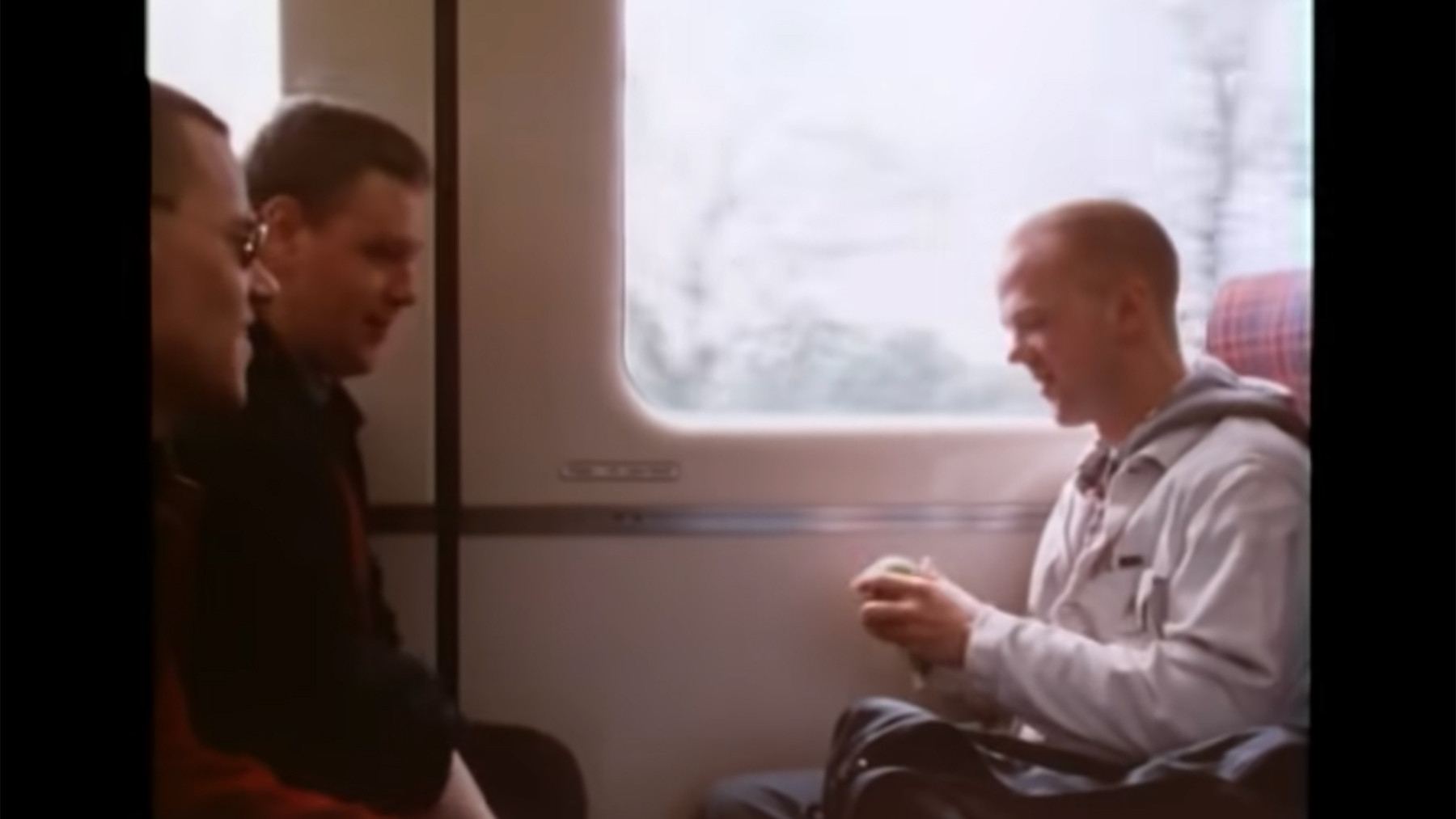 Soft Cell, synth-pop duo known for their Northern soul influenced great dance music hit Tainted Love.
Soft Cell, synth-pop duo known for their Northern soul influenced great dance music hit Tainted Love.
“We both like Northern soul, Sixties music, and the 12-inch record,” Marc Almond of Soft Cell explained in 1981, describing the shared influences with partner David Ball. They combined these loves into one powerful track. Their synth-pop rendition of Gloria Jones’ R&B stomper “Tainted Love” was already a hit, but for the extended version, they seamlessly merged it with The Supremes’ classic “Where Did Our Love Go?” “It was originally just going to include a few bars of ‘Where Did Our Love Go?’ but we like the way it turned out and included the whole song,” Almond said. This nine-minute medley, a New Wave disco in miniature, has captivated dance floors ever since. “Tainted Love/Where Did Our Love Go?” is a timeless example of synth-pop and great dance music with enduring appeal. —M.M.
The Orb, ‘Little Fluffy Clouds’ (1990)
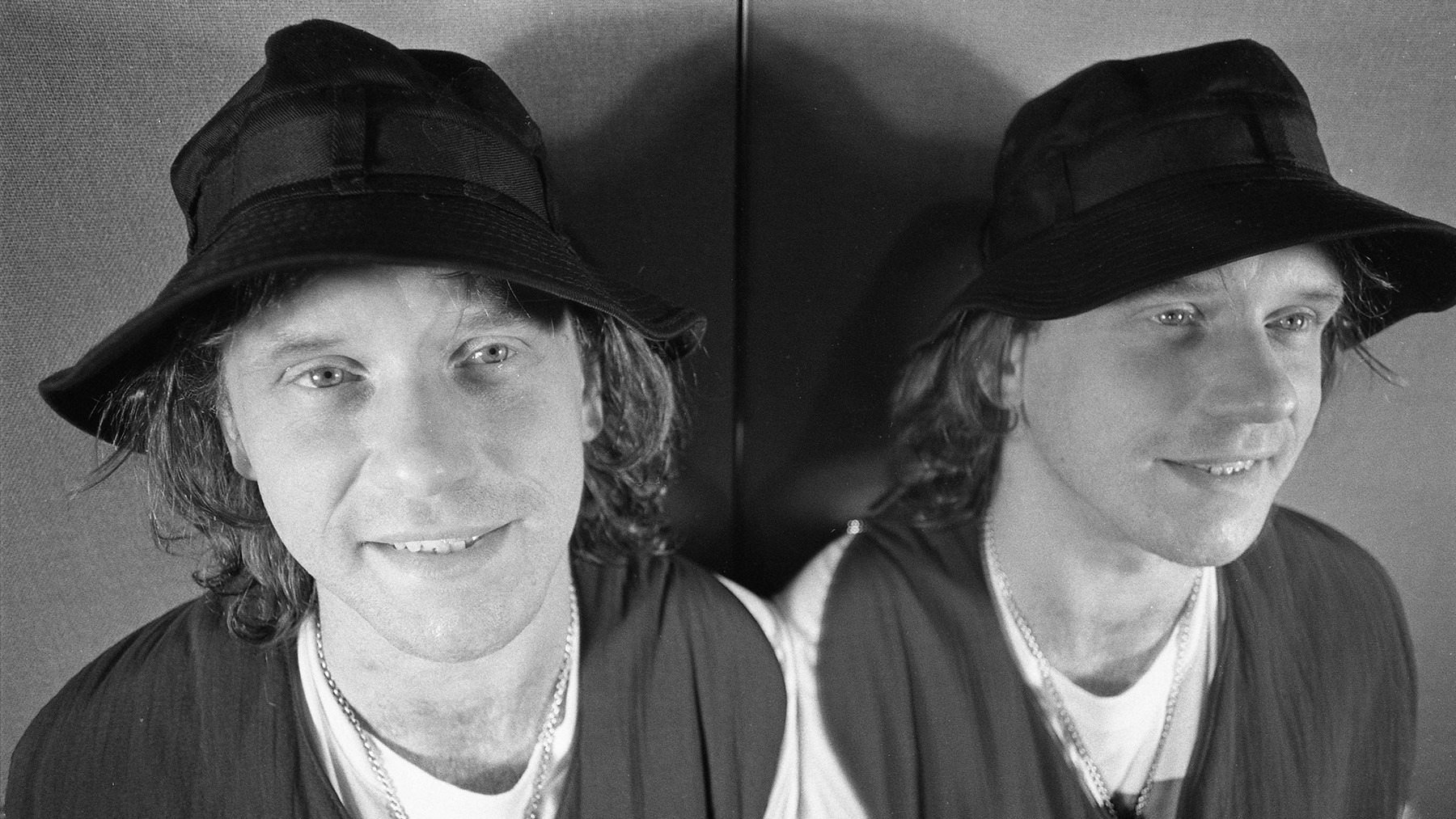 Alex Paterson of The Orb, ambient house pioneer and creator of great dance music track Little Fluffy Clouds.
Alex Paterson of The Orb, ambient house pioneer and creator of great dance music track Little Fluffy Clouds.
One day, The Orb’s Alex Paterson received a tape from a friend with a note: “This might be a good idea for a new Orb single.” Side A contained an interview with Rickie Lee Jones describing the Arizona skies of her youth: “The most beautiful skies, as a matter of fact … purple and yellow and red and on fire.” Side B was Steve Reich’s Electric Counterpoint. When Paterson combined them, he created “Little Fluffy Clouds,” the most comforting track of the acid-house era. Reich “was very happy when he heard it,” Paterson said. “Suddenly, it was being played to the masses, and they were loving it.” “Little Fluffy Clouds” is a pioneering example of ambient house and great dance music that blends soundscapes with rhythmic elements. —M.M.
Polygon Window, ‘Quoth’ (1993)
Richard D. James, known as Aphex Twin, is often associated with more introspective electronic music. However, in the early 1990s, he produced rave anthems of exceptional quality. “Quoth,” released under the moniker Polygon Window, is a prime example – a percussive symphony that was particularly popular in the American Midwest rave scene. “Quoth” demonstrates Aphex Twin’s capacity for creating high-energy, great dance music alongside his more experimental work. —M.M.
Skream, ‘Midnight Request Line’ (2005)
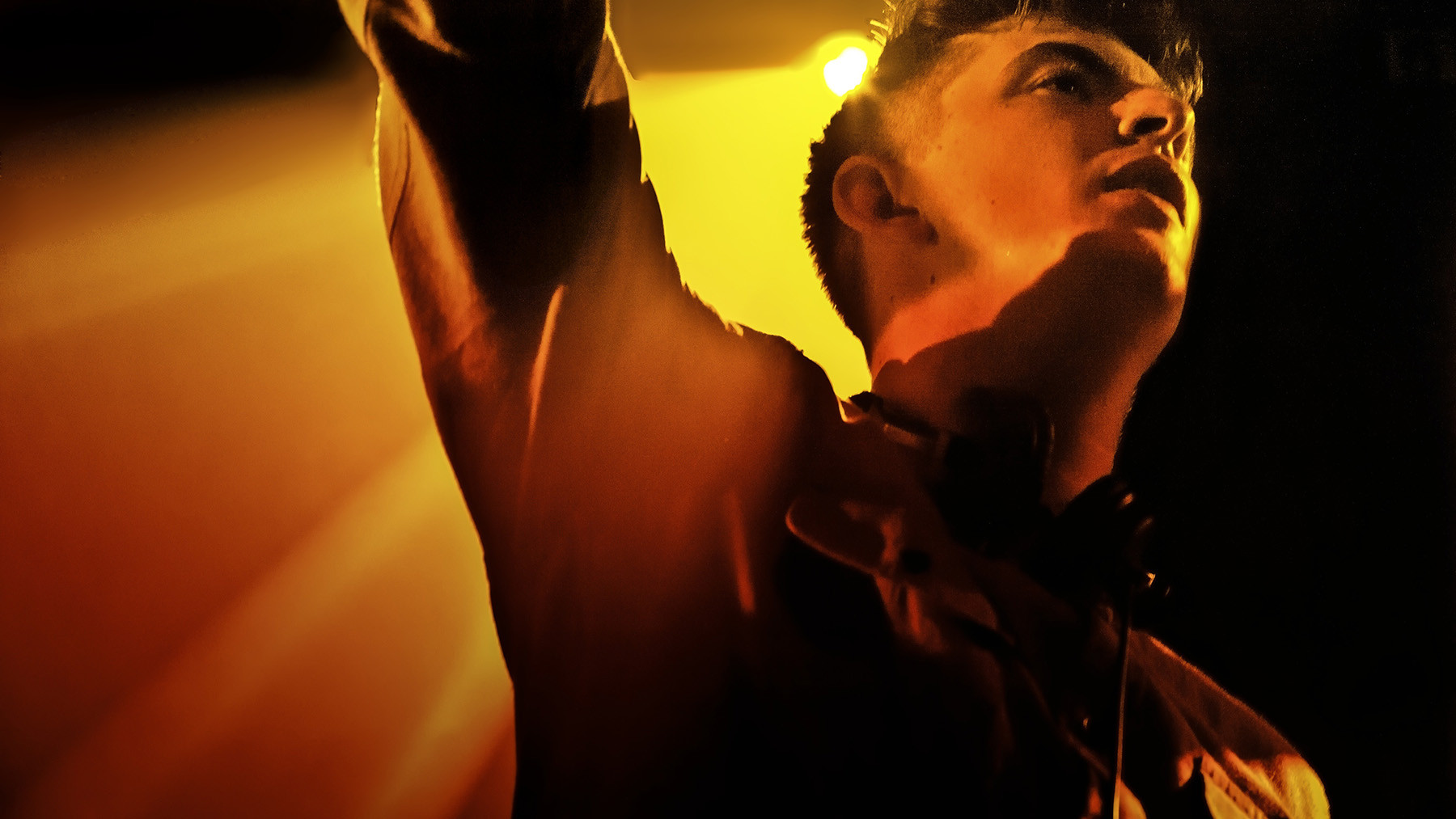 Skream, dubstep pioneer whose Midnight Request Line is considered great dance music.
Skream, dubstep pioneer whose Midnight Request Line is considered great dance music.
Shortly after London dubstep producer Skream released “Midnight Request Line,” he recalled, “I was on a boys’ holiday with my friends. They had a DJ Magazine or a Mixmag rack up on a shelf … I looked at it, and I had Record of the Month. I was like, ‘Shit, I need to get home.’” The track, with its wavering synth melody, smooth bassline, and prominent claps, propelled Skream and dubstep into the spotlight. “Midnight Request Line” was a pivotal track in the rise of dubstep and a defining example of great dance music within the genre. –M.M.
Paul Johnson, ‘Feel My M.F. Bass’ (1994)
“Ghetto house” was house music’s equivalent to gangsta rap – a raw, sample-based, and street-oriented style originating from Chicago producers in the 1990s, notably those on the Dance Mania label. Paul Johnson, despite being wheelchair-bound, became a leading figure in the style, creating unconventional tracks with unique flair. (His DJ mixtapes, featuring his dreamy voice-overs, were equally distinctive.) Johnson’s pinnacle was “Feel My M.F. Bass,” a brutally direct track with a cavernous kick drum over which Johnson gleefully intones, “Feel my motherfuckin’ bass in your face,” with a lover-like intimacy. “Feel My M.F. Bass” is a raw and impactful example of ghetto house and great dance music. —M.M.
Ten City, ‘That’s the Way Love Is’ (1989)
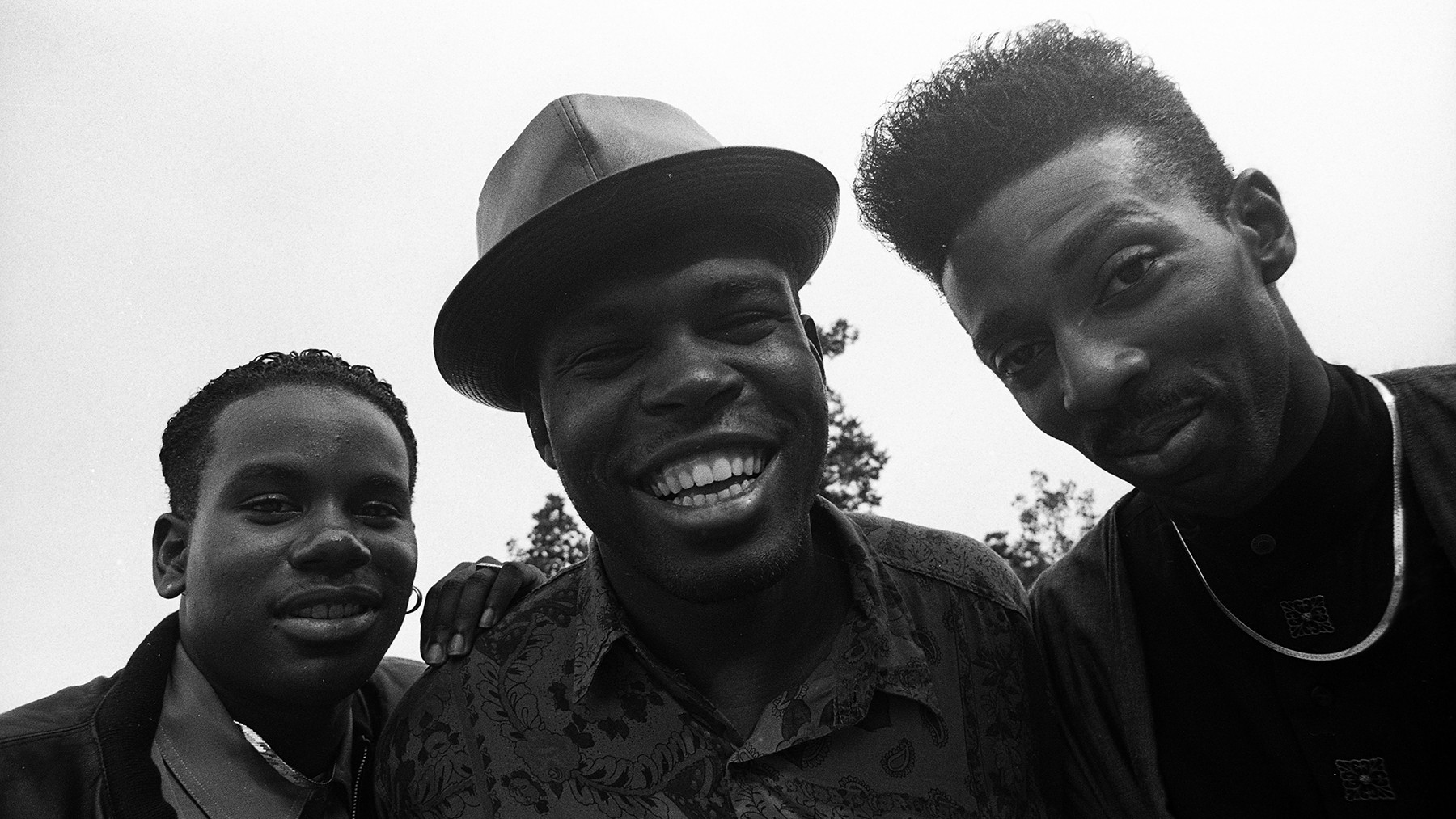 Ten City, Chicago house vocal trio known for soulful and great dance music.
Ten City, Chicago house vocal trio known for soulful and great dance music.
“When Ten City started, I think we were both at a point where we wanted to expand the genre by writing proper songs while at the same time doing more abstract things,” said Marshall Jefferson, who produced the Chicago house vocal trio. “That’s the Way Love Is,” Ten City’s third single, epitomized their style – Philly soul-inspired strings layered over lush love songs, topped by Byron Stingily’s soaring falsetto. It reached the UK Top 10 and Number One on the Billboard dance chart. Jefferson also noted, “people in South Africa have told us stories of how that song represents liberation for them.” “That’s the Way Love Is” is a soulful and uplifting example of Chicago house and great dance music with global resonance. —M.M.
Nitzer Ebb, ‘Join in the Chant’ (1987)
Hailing from England’s Midlands, industrial groove group Nitzer Ebb’s danceability was authentically derived. “The clubs we knew were disco and funk,” frontman Douglas McCarthy told The Guardian. “It’s in the DNA of the area.” Nitzer Ebb’s most rousing anthem, “Join in the Chant,” was a perfect techno crossover, particularly in Detroit, where techno artists had roots in industrial music. Richie Hawtin included “Chant” in his influential 1999 mix CD Decks, EFX & 909, and Andrew Weatherall famously said, “The closest I felt to God was listening to ‘Join in the Chant.’” “Join in the Chant” is a powerful crossover track that bridges industrial and techno, representing great dance music with intense energy. —M.M.
Bronski Beat, ‘Smalltown Boy’ (1984)
 Soft Cell, synth-pop duo known for their Northern soul influenced great dance music hit Tainted Love.
Soft Cell, synth-pop duo known for their Northern soul influenced great dance music hit Tainted Love.
Bronski Beat’s Jimi Somerville joked that his vocal training consisted of singing along to Donna Summer and Sylvester records. “I wanted a lot more out of life than working in a paint factory and having to accept that being gay was a nighttime occupation only,” he explained. “I just had had enough of the abuse and the heartache.” He channeled this emotion into “Smalltown Boy,” a poignant portrayal of alienation and escape. With its haunting vocal hook (“Run away, run away, run away”) and smooth synth backdrop, it became an instant gay club anthem, reaching Number One on the Billboard club chart and the UK Top Three. “Smalltown Boy” is an emotionally powerful and iconic example of synth-pop and great dance music. —M.M.
LFO, ‘LFO (Leeds Warehouse Mix)’ (1990)
LFO were central figures in Sheffield, England’s “bleep” scene – Warp Records’ original sound, characterized by distinctive bleeping sounds. However, Warp’s Steve Beckett emphasized, “it had nothing to do with the bleeps for the people making it — for them it was all about the bass.” The track that secured LFO’s signing was their self-titled “LFO,” where icy synth chords and bleeps set the stage for layers of deep bass – the bassline moves the body, while the sub-bass can shake buildings. “LFO (Leeds Warehouse Mix)” is a foundational track of bleep techno and great dance music focused on bass frequencies. —M.M.
Drake, ‘Sticky’ (2022)
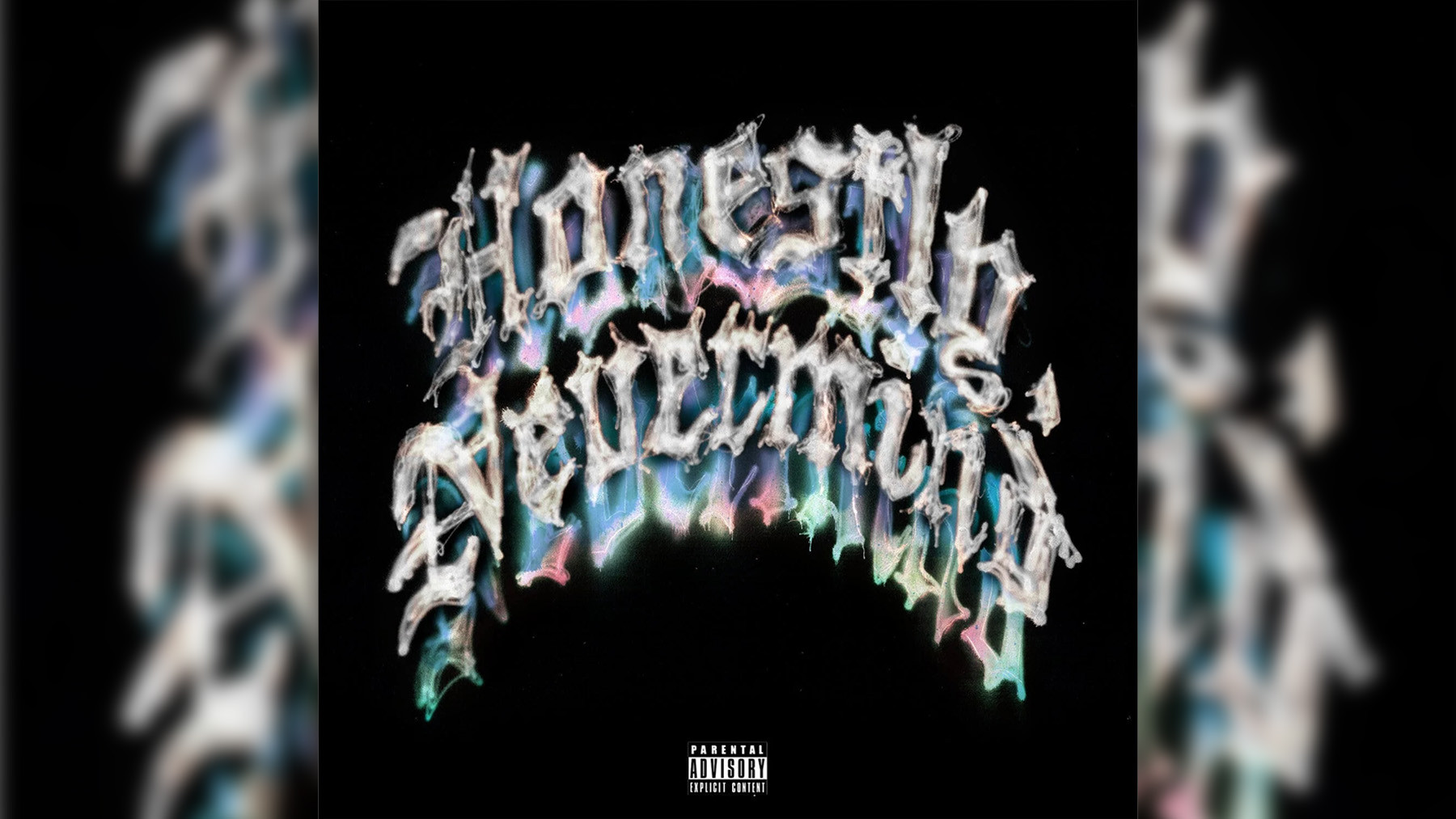 Drake, mainstream artist exploring dance music with tracks like Sticky, a form of great dance music.
Drake, mainstream artist exploring dance music with tracks like Sticky, a form of great dance music.
As the album title Honestly, Nevermind suggests, Drake’s foray into dance music feels intentionally understated, drawing influences from Jersey and Baltimore club music and deep house. The standout track is “Sticky,” produced by Gordo and Ry X. Drake shifts away from the low-key vocals prevalent on the album and raps about personal topics, including the release of Young Thug and the passing of Virgil Abloh. It’s a notable example of a major artist embracing a subculture and emerging with a refreshed sound. Drake’s “Sticky” represents a contemporary example of mainstream artists engaging with great dance music subgenres. —J.D.
Roland Clark, ‘I Get Deep (Shelter Mix)’ (2000)
“The love of house music started when I went to Club Zanzibar in lieu of my prom,” Roland Clark recounted, referencing the Newark, New Jersey club where Tony Humphries had a legendary DJ residency. “I Get Deep (Shelter Mix)” clearly expresses this deep affection. Over lively beats and a swirling keyboard melody, Clark delivers a monologue capturing the transcendent experience of a dance floor moment – “All the sweat just goes down my face/And I pretend that there’s nobody there but me in this place.” Clark also included the a cappella version on the 12-inch, which was later sampled by Fatboy Slim. “I Get Deep (Shelter Mix)” is a soulful and introspective example of great dance music that captures the essence of house music culture. —M.M.
Aly-Us, ‘Follow Me’ (1992)
 Aly-Us, New Jersey house trio known for uplifting and great dance music like Follow Me.
Aly-Us, New Jersey house trio known for uplifting and great dance music like Follow Me.
Early house music often had a raw, DIY quality, which was a significant part of its charm. This is particularly evident in Aly-Us’s uplifting anthem “Follow Me,” a gospel-infused track in form and message (“We must stop fighting/To achieve the peace”) from a New Jersey vocal trio who recorded it in a basement with a four-track recorder. Its lo-fi production, along with the occasional vocal imperfections, only enhances the song’s urgency and sincerity. “Follow Me” is a raw yet powerful example of early house music and great dance music with a message of unity. —M.M.
George McCrae, ‘Rock Your Baby’ (1974)
In the summer of 1974, two songs that originated in clubs reached Number One on the Billboard Hot 100. One was Hues Corporation’s “Rock the Boat,” and the other was George McCrae’s smooth classic, “Rock Your Baby.” These tracks are considered the first disco hits. The shimmering instrumentation for “Rock Your Baby” was created by Henry Wayne Casey, Richard Finch, and Jerome Smith. McCrae was added because he was present at the TK Records offices: “I think they gave me ‘Rock Your Baby’ to get me out of their hair,” he joked. After the record’s success, Casey, Finch, and Smith formed the core of KC and the Sunshine Band. “Rock Your Baby” marked a pivotal moment in the emergence of disco and remains a foundational piece of great dance music history. —M.M.
El General, ‘Perezosa’ (1995)
Panamanian artist El General established the blueprint for reggaeton with his international hits using reggae rhythms in the 1980s and 90s. His experimental approach and broader influence on club music are often overlooked. “Perezosa,” a powerful and empowering dance anthem from his album Club 555, showcases his range. The album is filled with high-energy electronic sounds capturing the spirit of vibrant parties across Latin America. “Perezosa” is a testament to El General’s innovation and his contribution to great dance music beyond reggaeton. —J.L.
Tom and Jerry, ‘Maximum Style’ (1994)
4Hero – Marc Mac and Dego MacFarlane – are drum and bass stalwarts, consistently creating influential music throughout the genre’s evolution, from early UK hardcore to neo-fusion. Tom and Jerry was one of their aliases, responsible for “Maximum Style,” released as jungle’s popularity was surging in the UK. This smooth, gliding track, with its captivating guitar melody and playful cartoon sound effects, balanced playfulness with a serious groove. “Maximum Style” is a gem of early jungle and great dance music from the era. —M.M.
LCD Soundsystem, ‘Losing My Edge’ (2002)
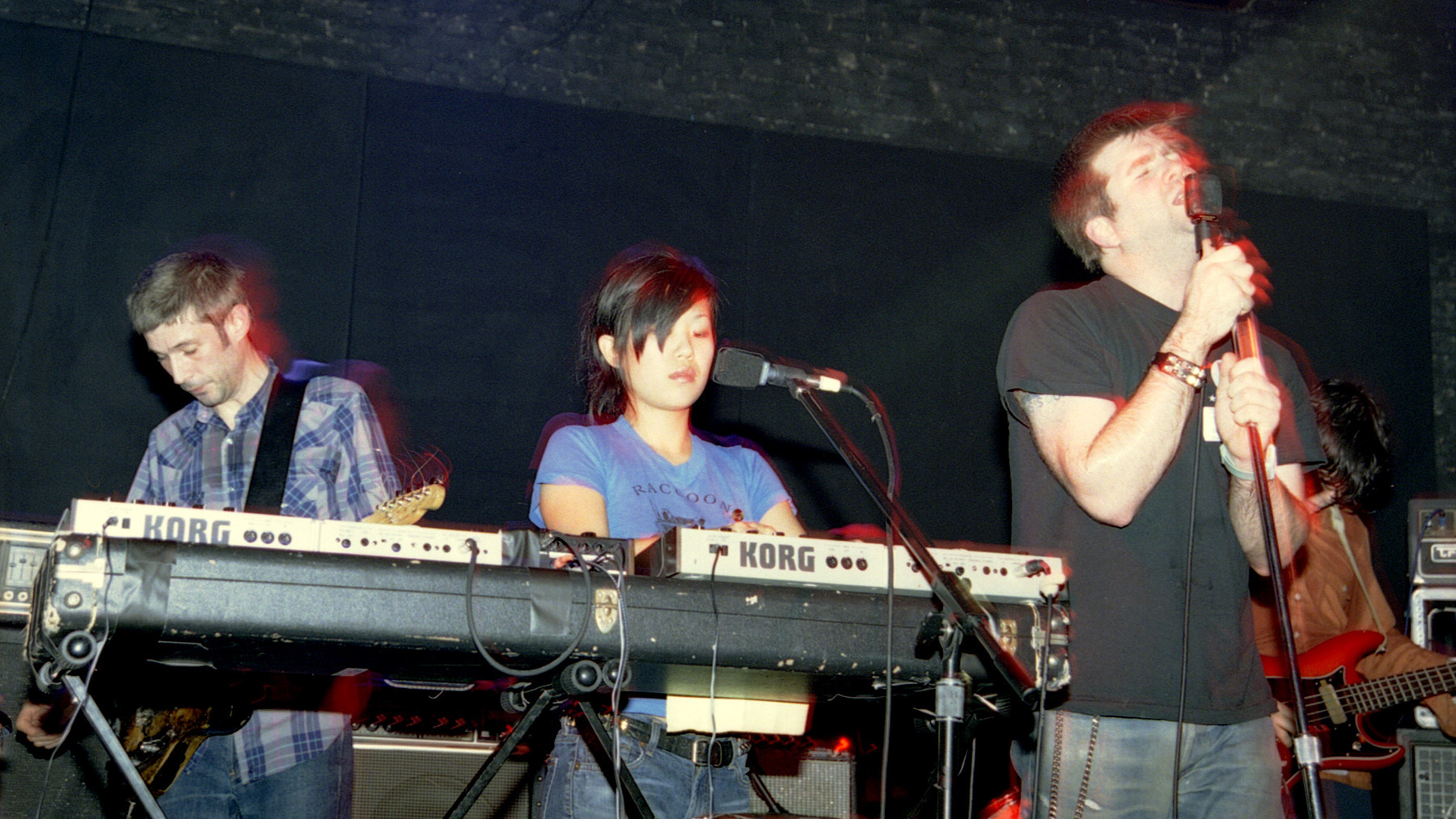 LCD Soundsystem performing Losing My Edge, a seminal track in dance-punk great dance music.
LCD Soundsystem performing Losing My Edge, a seminal track in dance-punk great dance music.
James Murphy’s debut single for LCD Soundsystem, “Losing My Edge,” is both a fantastic dance track and a brilliant piece of social commentary, a wryly ironic exploration of aging hipsterdom that helped ignite the New York dance-punk scene of the early 2000s. Murphy embodies an aging hipster observing his fading relevance as a younger generation emerges, making him feel obsolete, even with his history of being “there, at the first Can show in Cologne” or being the first “to play Daft Punk to the rock kids.” “Losing My Edge” makes you laugh and dance simultaneously, its FOMO theme resonating universally. “Losing My Edge” is a witty and energetic track, a cornerstone of dance-punk and great dance music. —J.D.
Shakira, ‘Ojos Asi (Thunder Mix)’ (1999)
Pablo Flores is a significant but often behind-the-scenes figure in Latin pop. The Puerto Rican DJ collaborated extensively with Emilio Estefan, working with artists like Gloria Estefan and Ricky Martin. When he met a then-lesser-known Colombian singer named Shakira in the 1990s, he and Javier Garza helped her create “Ojos Asi,” a forward-thinking track that honored her Lebanese heritage and foreshadowed the globally influenced sound of future Latin music. His extended remix, the “Thunder Mix,” amplified these elements with masterful production that resonated on dance floors worldwide. Shakira’s “Ojos Asi (Thunder Mix)” is a groundbreaking example of Latin pop and great dance music remixing. —J.L.
Squarepusher, ‘My Red Hot Car’ (2001)
 Squarepusher, electronic music innovator whose My Red Hot Car is considered experimental great dance music.
Squarepusher, electronic music innovator whose My Red Hot Car is considered experimental great dance music.
As Squarepusher, Tom Jenkinson pushed the boundaries of drum and bass in the mid-1990s, transforming its frenetic energy into complex, almost undanceable structures, infused with intellectualism. “Basically, I was beginning to stare up my own ass,” he later admitted. As a result, “I wanted to shake things up and make music in a more spontaneous, almost flippant way.” However, the fragmented vocals and glitchy production of “My Red Hot Car” are not purely abstract. The sonic trickery alternates with moments of space and groove, all underpinned by Jenkinson’s playful bassline, making it appealing to adventurous DJs. “My Red Hot Car” is an experimental yet engaging track that exemplifies Squarepusher’s unique approach to great dance music. —M.M.
Moloko, ‘Sing It Back (Boris Musical Mix)’ (1997)
With Róisín Murphy’s vocals described by her partner Mark Brydon as “Peggy Lee on mescaline,” Moloko’s 1998 single “Sing It Back” was initially moody, downtempo, and somewhat excessive. It was not commercially successful. Then, Belgian house producer Boris Dlugosch created his remix – a crisp house groove in the style of Chic, with a captivating rhythm guitar and playful bassline. This remix reached the UK Top Five and launched Murphy’s successful and dance-oriented solo career. The Boris Musical Mix of “Sing It Back” transformed the original into a house classic and a prime example of great dance music remixing. —M.M.
The Human League, ‘Don’t You Want Me’ (1981)
“Phil [Oakey] had this idea lyrically for this song: a story in the song which is very much A Star Is Born [and] My Fair Lady — the impresario who takes an everyday person and transforms her into a superstar that outshines himself,” Human League keyboardist Jo Callis explained about “Don’t You Want Me,” which he co-wrote. Initially, the group wasn’t particularly enthusiastic about the song, despite its he-said-she-said structure and catchy riff. However, the song became their first Number One hit in both the UK and US, and a Top Three hit on the Billboard Dance Club chart, marking a key moment in the fusion of UK synth-pop, club music, and mainstream pop charts. “Don’t You Want Me” is a synth-pop classic and a significant example of great dance music crossing over into mainstream success. —M.M.
